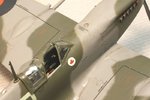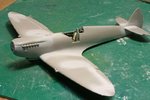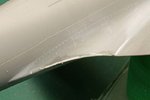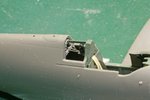- Thread starter
- #81
Crimea_River
Marshal
As I continue the fill and sand the various gaps, I came to notice something of interest. Recall that I had added some filler on the top of the cowl, thinking that this area should have been flat. Now take a close look at the below details of some pretty accurate profile drawings that I have of several Spit marks. Trace the line of the top of the cowl from the windscreen to the spinner in both details and you'll see that the top one is quite flat whereas the bottom one makes a pronounces upward step at the cowl seam and then curves back down to the spinner. Checking various other profiles, I see similar differences and it appears the Mk VIII has this.
Comments?
Comments?






